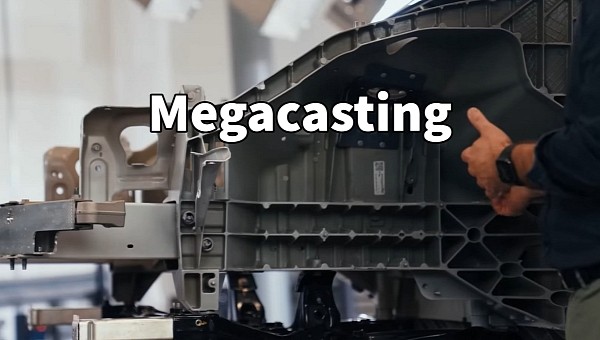Tesla vehicles have been praised by safety agencies across the globe for their high safety level, which allowed them to get those five-star ratings in crash tests. Lars Moravy, Tesla's vice president of vehicle engineering, explains in a video all the safety measures that make Teslas the safest cars in the world.
Tesla is on a roll promoting its vehicles on social media, and it's doing a great job. For the best part of this year, Tesla engineers, test pilots, and designers have explained the most interesting features unique to Tesla. In the latest video, Lars Moravy, Tesla's vice president of vehicle engineering, discusses the safety features that make Tesla cars so safe. It's also a rare occasion to see the single-piece front megacasting in the Tesla Model Y and learn how it works to protect the occupants in a crash.
Moravy talks about some of the measures Tesla took to improve passive safety, starting with the design phase. In case of a crash, Tesla's main priority is protecting the car's occupants, with the second being protecting the battery. The car's progressive crash protection structure plays a crucial role, with controlled deformation zones that dissipate the shock before it reaches the cabin. The front megacasting is an important part of this protective system, and so far, it's unique to Tesla. Moravy is confident that if more cars had been fitted with such structures, more lives would have been saved.
It's interesting how the megacasting is built with thinner ribs at the front than the ones at the back, which helps with progressive deformation. Tesla also designed multiple load paths for optimal crash protection in collisions with different types of vehicles and objects. The shock is also directed toward the crush rail and the subframe, and everything is designed so that the shock pulls the drive unit down and out of the way of the cabin and the battery.
Moravy shows how these protective structures behaved in the Model Y crashed during the NHTSA tests. It's visible that the car was totaled, and the front was completely crushed, but the body is intact past the A-pillar. The collision energy was absorbed before reaching the cabin, as expected, so the door could be opened from the inside without a problem. The cabin also looks untouched on the inside, except for the airbags blown off, which means that the occupants have all the room they had before the accident to survive.
Another important characteristic of Tesla cars, and any electric vehicle, is the very low center of gravity. With the battery installed so low between the wheels, a Tesla is almost impossible to roll over, preventing fatal injuries associated with roll-over crashes. Watch Lars Moravy explaining Tesla's safety in the video below.
Moravy talks about some of the measures Tesla took to improve passive safety, starting with the design phase. In case of a crash, Tesla's main priority is protecting the car's occupants, with the second being protecting the battery. The car's progressive crash protection structure plays a crucial role, with controlled deformation zones that dissipate the shock before it reaches the cabin. The front megacasting is an important part of this protective system, and so far, it's unique to Tesla. Moravy is confident that if more cars had been fitted with such structures, more lives would have been saved.
It's interesting how the megacasting is built with thinner ribs at the front than the ones at the back, which helps with progressive deformation. Tesla also designed multiple load paths for optimal crash protection in collisions with different types of vehicles and objects. The shock is also directed toward the crush rail and the subframe, and everything is designed so that the shock pulls the drive unit down and out of the way of the cabin and the battery.
Moravy shows how these protective structures behaved in the Model Y crashed during the NHTSA tests. It's visible that the car was totaled, and the front was completely crushed, but the body is intact past the A-pillar. The collision energy was absorbed before reaching the cabin, as expected, so the door could be opened from the inside without a problem. The cabin also looks untouched on the inside, except for the airbags blown off, which means that the occupants have all the room they had before the accident to survive.
Another important characteristic of Tesla cars, and any electric vehicle, is the very low center of gravity. With the battery installed so low between the wheels, a Tesla is almost impossible to roll over, preventing fatal injuries associated with roll-over crashes. Watch Lars Moravy explaining Tesla's safety in the video below.








